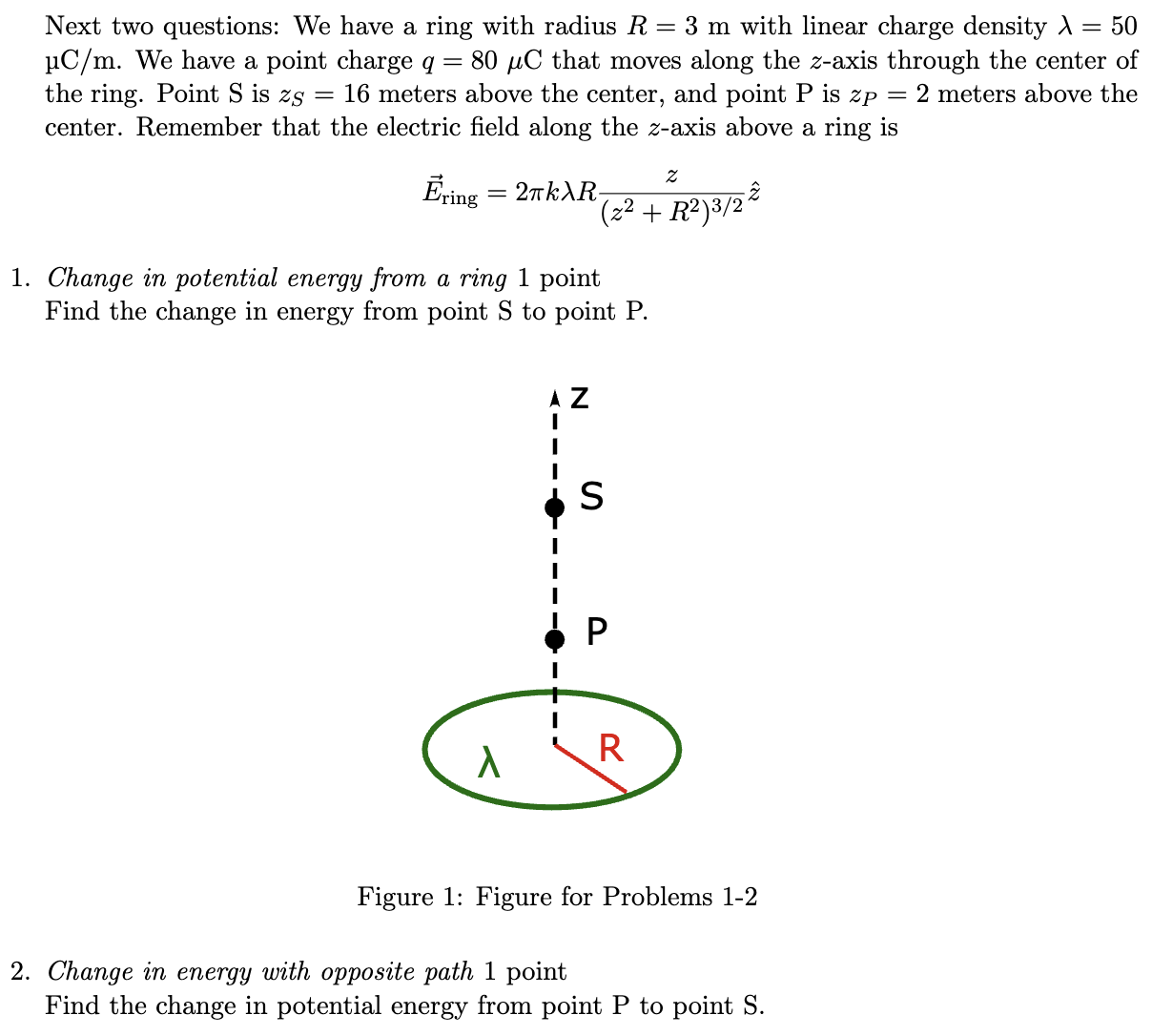Next two questions: We have a ring with radius R = 3 m with linear charge density λ = 50 μC/m. We have a point charge q = 80 μC that moves along the z-axis through the center of the ring. Point S is zS = 16 meters above the center, and point P is zP = 2 meters above the center. Remember that the electric field along the z-axis above a ring is E→ring = 2πkλRz(z2+R2)3/2 z^Change in potential energy from a ring 1 point Find the change in energy from point S to point P. Figure 1: Figure for Problems 1-2 Change in energy with opposite path 1 point Find the change in potential energy from point P to point S.
